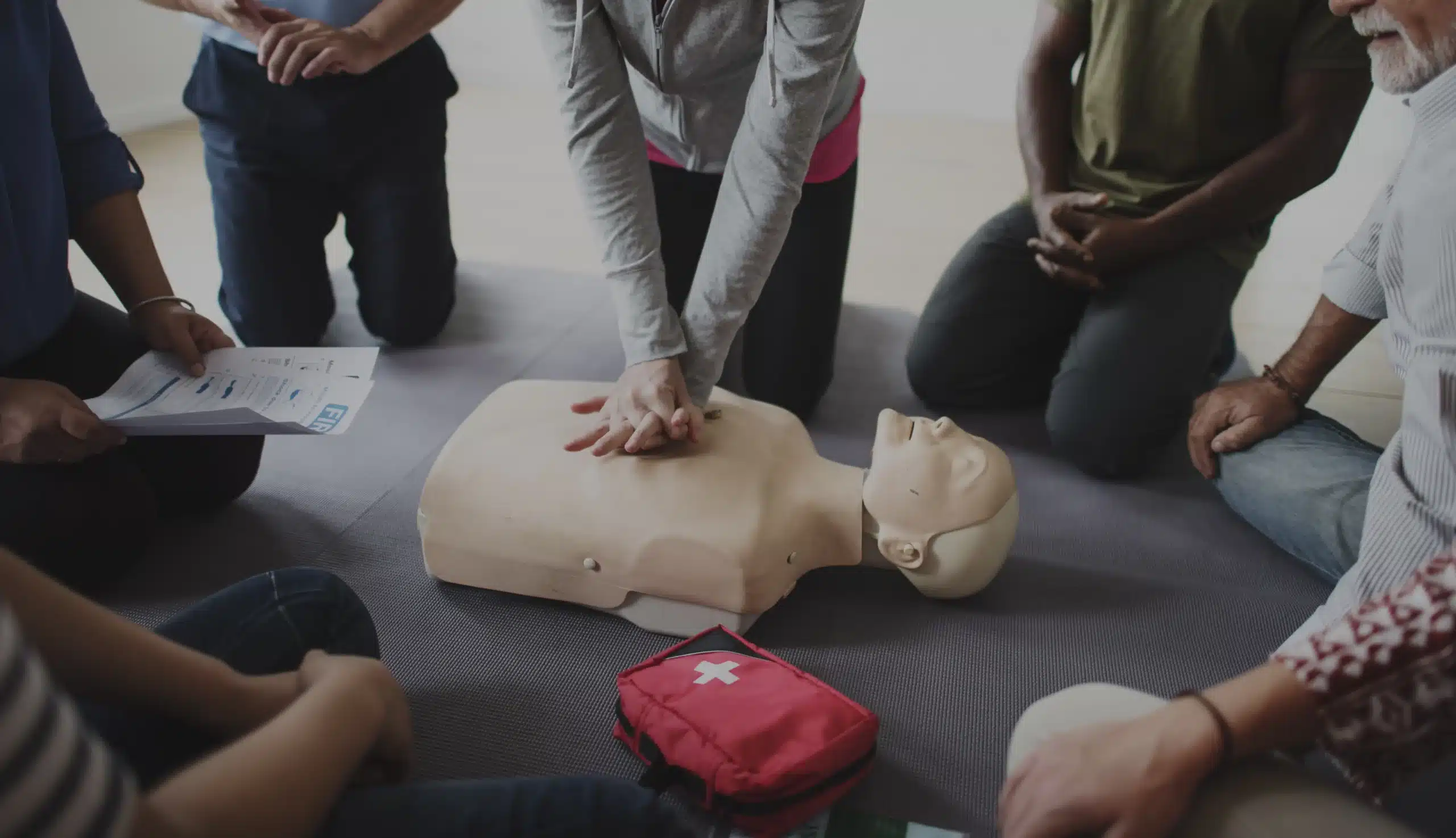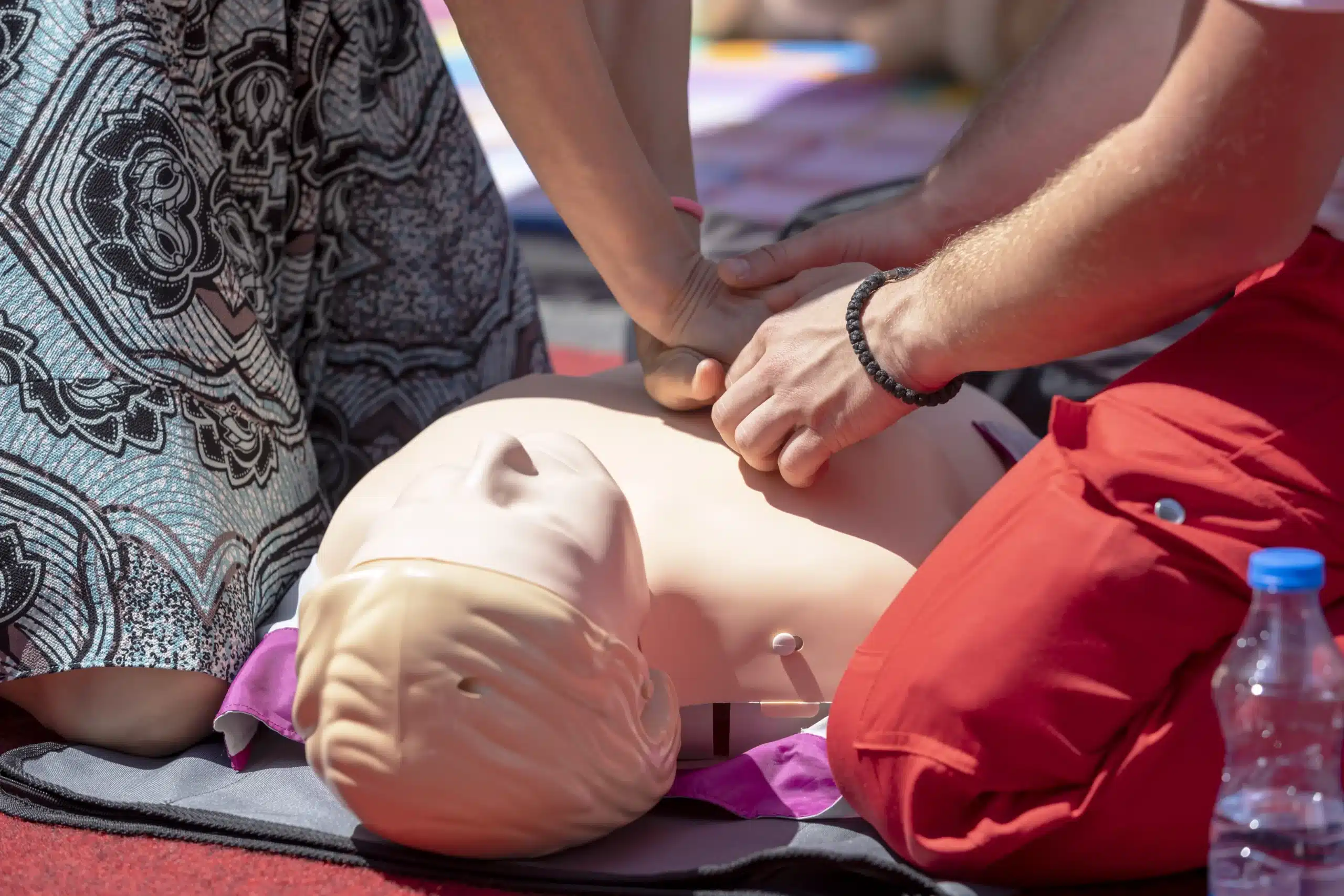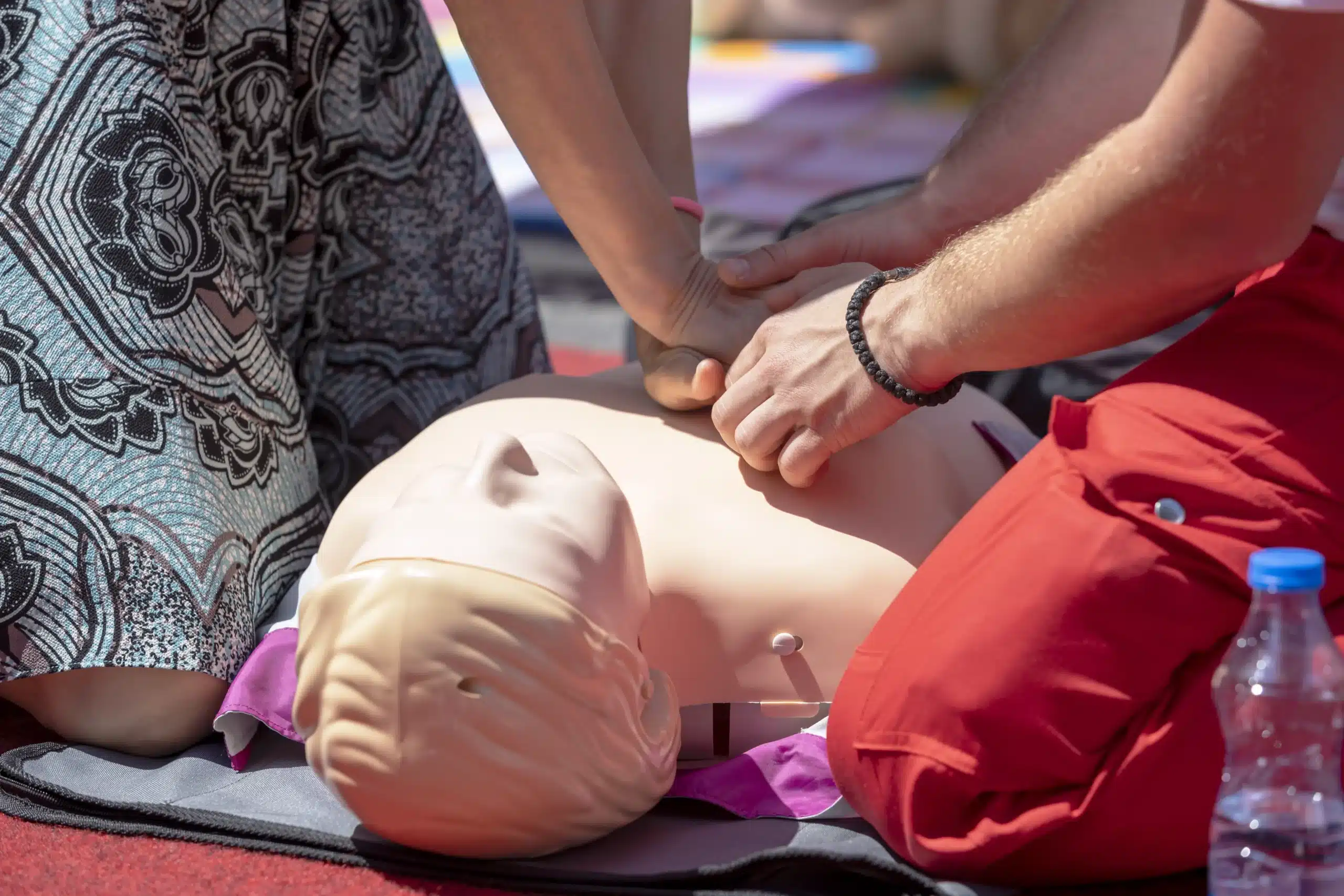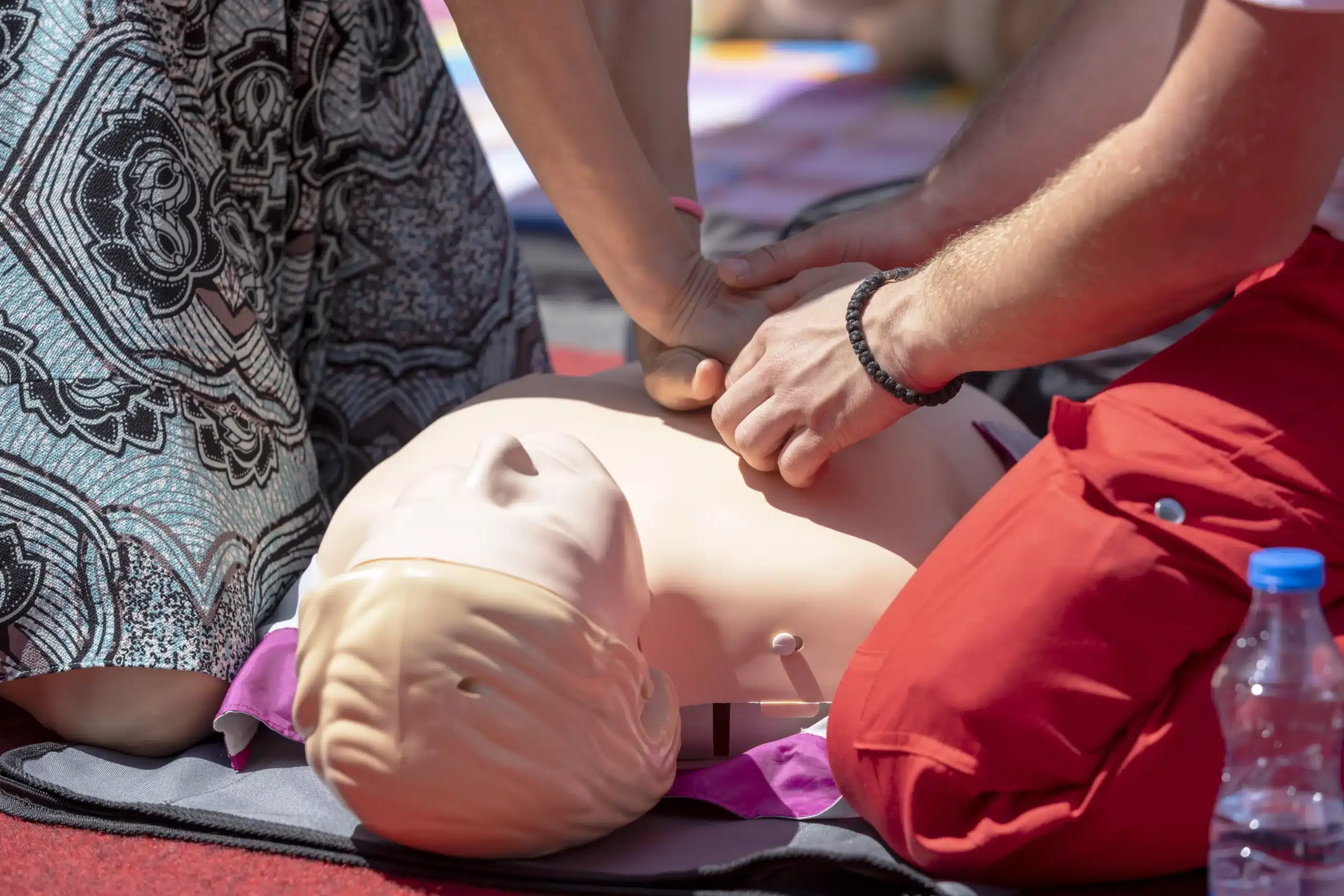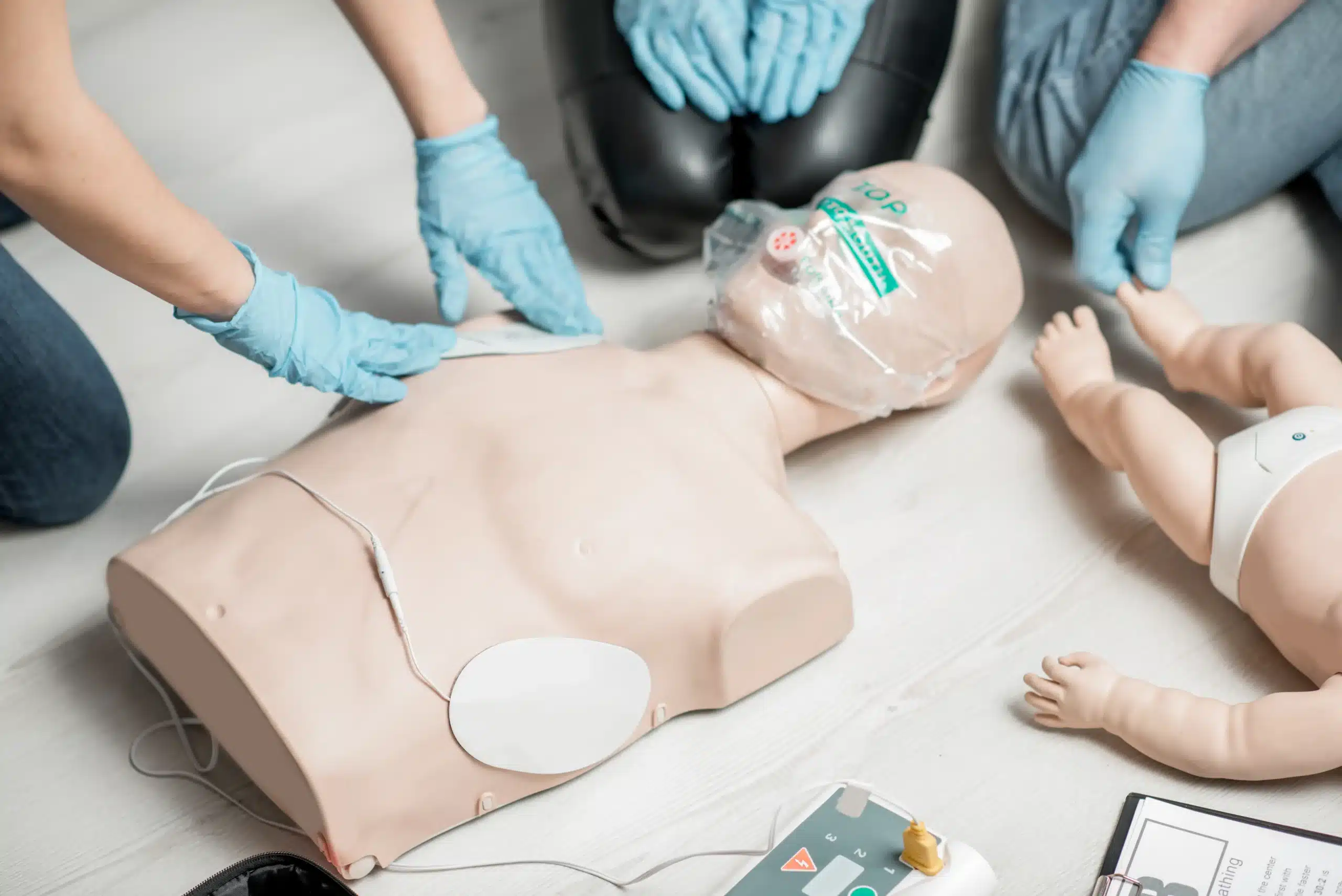Let’s face it, keeping up with certifications can feel overwhelming, but BLS recertification is an investment in your career and the well-being of your patients. It’s a vital skill that empowers you to respond confidently in critical situations. This guide streamlines the process, providing clear, actionable steps to renew your BLS certification. We’ll cover everything from eligibility requirements and the recertification process to finding affordable “bls recertification near me” options like those offered by Safety Training Seminars. We’ll also explore the latest guideline updates and offer practical tips to make your recertification journey as smooth as possible.
Key Takeaways
- Maintain your lifesaving skills with regular BLS recertification. Explore different learning formats—online, in-person, or blended—to find what suits your schedule and preferences. Staying certified ensures you’re prepared for emergencies.
- Affordable BLS recertification is within reach. Compare providers, consider group discounts, and explore online options for cost-effective learning. Investing in recertification benefits both your career and your community.
- Prepare for recertification by reviewing updated guidelines and understanding the process. Familiarize yourself with changes in CPR techniques and other essential procedures. Knowing what to expect will make you feel more confident on recertification day.
What is BLS Recertification?
What is BLS & Why Recertify?
BLS (Basic Life Support) certification equips healthcare providers, lifeguards, fitness instructors, and other professionals with the skills to respond to medical emergencies. It emphasizes recognizing life-threatening emergencies, performing high-quality CPR, using an AED, and relieving choking. This training is essential for anyone who might need to provide immediate care while waiting for advanced medical personnel. BLS certification is typically valid for two years. There’s no grace period after it expires, so staying current with your recertification is crucial. Completing a renewal course and passing an exam maintains your certification and ensures you’re prepared to handle emergencies effectively.
Stay Current with BLS
BLS guidelines are updated periodically to reflect the latest scientific research and best practices in resuscitation. Staying informed about these updates is essential for providing effective care and successfully completing your BLS recertification. The International Liaison Committee on Resuscitation continuously reviews new research to ensure guidelines remain up-to-date. If your certification has lapsed, a renewal course will cover any changes to the guidelines since your last certification. This prepares you for the recertification exam and builds confidence in your ability to provide high-quality care. Regularly reviewing resources like the 2023 BLS Guidelines Updates can help you stay informed.
Find BLS Recertification Providers Near You
Finding the right BLS recertification provider can feel overwhelming, but it doesn’t have to be. Whether you’re in Modesto, Turlock, Manteca, or anywhere else, several options are available to fit your schedule and learning style. Let’s break down how to find the perfect fit.
Safety Training Seminars in Modesto
If you’re in the Modesto, California, area, Safety Training Seminars offers convenient and affordable BLS recertification courses. As an American Heart Association Training Center, we provide high-quality instruction and ensure you meet the latest guidelines. See our BLS recertification course page for schedules and registration. We proudly serve Modesto, Turlock, and Manteca, making it easy to find a class nearby. Our commitment to low prices makes renewing your certification accessible. We also offer discounts for group classes.
Evaluate Local Provider Reputation
Beyond specific training centers, consider other local providers like the American Red Cross. They offer various BLS renewal and recertification courses to keep healthcare professionals’ skills sharp. When choosing any provider, look for reviews and testimonials. Word-of-mouth referrals from colleagues can also be invaluable. A provider’s reputation speaks volumes about the quality of instruction and overall experience you can expect.
Explore Online Provider Options
For those with busy schedules or limited access to in-person classes, online BLS recertification is a fantastic option. Providers like ACLS.com offer accredited online BLS certification that provides the same benefits as traditional courses, with added flexibility. Online recertification lets you learn at your own pace and complete the coursework when it’s most convenient. Just remember that BLS renewal needs to happen within 30 days after expiration, whether you choose an online or in-person course. This involves selecting your course, finishing the material, passing the exam, and receiving your updated certification card.
How Much Does BLS Recertification Cost?
One of the most common questions about BLS recertification is, of course, the cost. Let’s break down typical price ranges, explore how Safety Training Seminars helps you save, and look at some factors that influence overall costs.
Typical Price Ranges
BLS recertification costs vary. In-person BLS recertification courses typically range from $60 to $120. Online BLS recertification courses are sometimes less expensive. Many courses, like those offered by Berkeley CPR Classes, include training materials, so check with your provider to see what’s included. Initial BLS certification is typically more expensive than renewal, sometimes up to $120, according to RCPALS.
Safety Training Seminars’ Low Price Guarantee
At Safety Training Seminars, we believe lifesaving skills should be accessible. Our low price guarantee reflects our commitment to competitive pricing for BLS recertification courses. Compare our prices with other training centers in Modesto, Turlock, and Manteca. We’re confident you’ll find our courses cost-effective without compromising quality instruction. We also offer group discounts to make training more affordable.
Factors Affecting Course Costs
Beyond the provider and course format, several factors can affect the final price. If your certification has lapsed, you might need to take the full BLS course again. Also, watch for additional fees, such as those for online access codes. Being aware of these factors—course format, certification status, and extra fees—will help you budget, as explained in this World Newswire article. At Safety Training Seminars, we’re always upfront about our pricing, so feel free to contact us with any questions.
Choose the Right BLS Recertification Format
So, you’re ready to recertify your BLS skills—fantastic! Now, let’s figure out the best way to do it. There are several formats available, each with its own advantages and disadvantages. Think about your learning style, schedule, and preferences as you explore these options.
In-Person Courses: Pros & Cons
In-person BLS recertification courses offer a structured learning environment led by an expert instructor. You’ll have the opportunity to ask questions, practice skills with classmates, and receive immediate feedback. This hands-on approach can be incredibly valuable for building confidence and mastering essential techniques. The Red Cross offers a range of in-person courses, as noted on their BLS Certification & Renewal page. Plus, the camaraderie and shared learning experience can be motivating. These courses typically run between 2.5 and 4.5 hours, providing a comprehensive review of BLS skills. However, the fixed schedule of in-person classes might be tricky if you have a packed calendar.
Online Options: Flexibility & Limitations
Online BLS recertification offers unparalleled flexibility. You can learn at your own pace, anytime, anywhere—perfect for those juggling work, family, or other commitments. ACLS.com highlights the flexibility of online certification, emphasizing that it provides the same benefits as traditional courses with added convenience. However, online courses may not offer the same level of hands-on practice as in-person training. While you’ll learn the theory and procedures, you might miss out on the valuable experience of performing CPR on a manikin under the guidance of an instructor. This guide on BLS renewal explains that your BLS certification, regardless of format, is typically valid for two years.
Hybrid Programs: Combining Convenience & Hands-On Practice
If you like the idea of online learning but also value hands-on training, a hybrid program might be the perfect fit. These programs combine the flexibility of online coursework with in-person skills sessions. You can work through the theoretical material at your own pace online, then attend a shorter in-person session to practice your skills and demonstrate competency. The Red Cross also offers blended learning formats, combining online and in-person elements. This approach offers a balanced approach, allowing you to benefit from both the convenience of online learning and the practical experience of hands-on training. It’s a great way to ensure you’re fully prepared for real-life emergencies.
BLS Recertification Requirements & Process
Eligibility Criteria
Before you sign up for BLS recertification, make sure you’re eligible. Generally, you’ll need a current BLS provider card from the American Heart Association, or one that’s expired within the last 30 days. This demonstrates you’ve already completed the initial training and understand the core concepts. If your card is expired for longer than that, you might need to take the full BLS course again instead of a shorter recertification course.
Steps to Recertify
The recertification process is straightforward. First, choose a course format that fits your schedule and learning style—online, in-person, or blended learning. Once you’ve selected a course and registered, you’ll work through the training materials. These cover core concepts, updates to guidelines, and any new procedures. After completing the course, you’ll take a written exam and a practical skills test. After successfully completing both, you’ll receive your updated BLS provider card.
Common Recertification Misconceptions
One common misconception is that BLS certification is a one-time requirement. Like many certifications in healthcare, BLS requires periodic renewal to keep your skills current. Another mistake is assuming you don’t need to study for the recertification exam. Even if you’re an experienced healthcare provider, reviewing the material is essential. Guidelines and best practices can change, so brushing up on the latest information will increase your chances of success. Take advantage of practice tests and review materials offered by your chosen training provider, like those available at Safety Training Seminars for BLS recertification.
Get the Best Value: Discounts & Group Rates
BLS recertification is an essential investment in your career and the community, but it doesn’t have to be expensive. With a little research, you can find ways to reduce the cost and make high-quality training more accessible. Let’s explore some options for getting the best value.
Safety Training Seminars’ Group Discounts
Recertifying with a group of colleagues or friends? Consider the advantages of group discounts. At Safety Training Seminars, we offer special rates for groups, making it easier for everyone to stay current on their certifications. Visit our group discount page for details and see how much your team can save. This is a great option for businesses, community organizations, or even a group of friends. Many other training centers, like the American Red Cross, also offer group discounts for BLS training, so it’s always worth asking.
Professional Association Discounts
Your professional memberships can also unlock savings. Many associations provide discounted rates on BLS recertification courses to their members. Healthcare professionals, for example, might find reduced prices through their medical associations. Check with your professional organization to see if they have partnerships with any training providers. This can be a valuable member benefit and a smart way to manage continuing education expenses.
Seasonal Promotions & Early Bird Specials
Timing can also be key to saving money. Look out for seasonal promotions and early bird discounts offered by training centers. You might find lower prices during certain times of the year, like back-to-school or the holidays. The American Red Cross, for instance, often runs seasonal promotions, so consider timing your recertification with these opportunities. Planning ahead can make a difference. Also, check Safety Training Seminars’ website and social media for our latest promotions.
Prepare for Your BLS Recertification
Getting ready for your BLS recertification doesn’t have to be stressful. With a little preparation, you can walk into your recertification course feeling confident and ready to refresh your lifesaving skills. Here’s how to get ready:
Review Materials & Resources
One of the most common mistakes people make is not reviewing the course material before their recertification test. BLS guidelines are updated periodically, so it’s important to familiarize yourself with any changes. Brushing up on the material beforehand will help you feel more prepared and increase your chances of success. You can find the most up-to-date BLS guidelines online. This review process is crucial for staying current with the latest procedures.
What to Expect on Recertification Day
Knowing what to expect can ease any pre-test jitters. Your BLS recertification will involve a course review followed by a written exam and a skills check. The recertification process is typically valid for two years. Make sure you schedule your skills check in advance to avoid any delays in getting recertified.
Tips for Success
Planning ahead is key. Schedule your recertification well before your current certification expires to avoid any lapses in your credentials. This will ensure you’re always ready to provide assistance in an emergency. Also, remember to double-check the specific requirements for your recertification, as they can vary. By avoiding these common mistakes and planning ahead, you can streamline the BLS renewal process, allowing you to focus on what matters most: mastering the skills to provide high-quality care. For more tips on renewing your American Heart Association BLS certification, check out this helpful step-by-step guide.
Key Updates in BLS Guidelines
Staying current with the latest BLS guidelines is crucial for providing effective care during emergencies. Here’s a rundown of some key updates:
Key CPR Technique Changes
The 2020 BLS guidelines emphasize the rapid use of epinephrine in cardiac arrest cases. Administering epinephrine promptly can significantly improve a patient’s chances of survival, highlighting the importance of timing when it comes to medication during these critical events. For healthcare providers, staying updated on the latest recommendations for epinephrine administration is essential for optimal patient outcomes.
Focus on High-Quality Compressions
Maintaining high-quality chest compressions is paramount throughout any resuscitation process. The guidelines now suggest that when an advanced airway (like a tracheal tube) is in place during CPR, continuous compressions—without pausing for ventilation—may be appropriate. This shift underscores the importance of consistent, uninterrupted compressions for effective circulation. For a helpful breakdown of these changes, visit the ACLS training website.
Updates in Pediatric Care & Opioid Overdose Response
In pediatric cases involving suspected opioid overdose, the guidelines recommend administering naloxone in addition to standard BLS/PALS procedures. However, high-quality CPR should always take precedence over naloxone administration. This prioritization ensures that life-saving resuscitative measures are implemented immediately. This information is especially critical for healthcare professionals working with young patients. Review the latest guidelines for opioid overdose response.
Related Articles
- BLS Renewal in Modesto: Your Complete Guide – Modesto CPR Classes
- BLS Renewal in Turlock: Your Complete Guide – Modesto CPR Classes
- BLS Renewal in Manteca: Your Complete Guide – Modesto CPR Classes
- HeartCode BLS in Turlock: Your Certification Guide – Modesto CPR Classes
- BLS Certification in Modesto: Your Complete Guide – Modesto CPR Classes
Frequently Asked Questions
How often do I need to recertify my BLS certification? BLS certification is typically valid for two years. It’s important to recertify before your current certification expires to maintain your credentials and ensure you’re prepared to respond to emergencies.
What are my options for BLS recertification? You have several options for BLS recertification: in-person courses, online courses, and blended learning programs that combine online learning with in-person skills sessions. Choose the format that best suits your learning style and schedule.
Where can I find BLS recertification courses near me? If you’re in the Modesto, Turlock, or Manteca area, Safety Training Seminars offers convenient and affordable BLS recertification courses. You can also check with other local providers like the American Red Cross or explore online options.
What if my BLS certification has already expired? If your BLS certification has expired within the last 30 days, you can usually take a recertification course. If it’s been longer than 30 days, you might need to take the full BLS course again. Check with your chosen training provider to confirm their policy.
How can I save money on BLS recertification? Look for group discounts, professional association discounts, and seasonal promotions. Safety Training Seminars offers group discounts and a low price guarantee. Comparing prices and checking for special offers can help you find the most cost-effective option.
